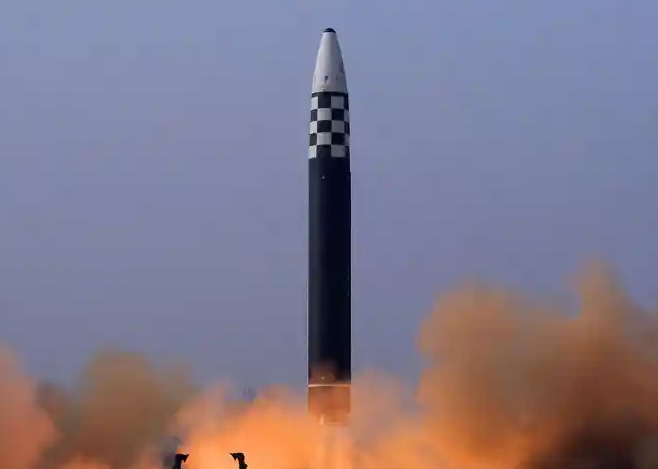North Korea conducted what is thought to be its largest intercontinental ballistic missile test ever on Thursday, that's according to the South Korean and Japanese militaries.
根据韩国和日本军方透露的消息,朝鲜于本周四进行了被认为是其有史以来最大的洲际弹道导弹发射试验。
It marks a dramatic end to a self-imposed moratorium on long-range testing,
这标志着朝鲜戏剧性地结束了自己之前宣布的“远程导弹试验禁令”,
and would be the first full-capability launch of the nuclear-armed state's largest missile since 2017.
并且这将是这个拥有核武器的国家自2017年以来首次全面发射规模最大的导弹。
In response, South Korea said it had conducted a live-fire test of multiple ballistic and tactical missiles immediately after North Korea's alleged launch.
作为回应,韩国方面表示,在朝鲜发射导弹后,韩国立即进行了多弹道导弹和战术导弹实弹试验。

Japan's vice defence minister Makoto Oniki said the projectile appeared to be a new model of an intercontinental ballistic missile,
日本防卫副大臣鬼木诚称,朝鲜发射的可能是一种新型洲际弹道导弹,
given that it reached an altitude of more than 3,700 miles.
这是根据其飞行高度超过3700英里推测而出的。
North Korea had put its ICBM and nuclear tests on hold since 2017, but has defended the weapons as necessary for self-defense.
自2017年以来,朝鲜暂停了洲际弹道导弹和核试验,但一直辩称这些武器是自卫的必要手段。
Thursday's launch would be at least the 11th North Korean missile test this year, an unprecedented frequency.
周四的这次发射,至少是朝鲜今年的第11次导弹试验,这一频率是前所未有的。
Both South Korea's outgoing President Moon Jae-in, who made engaging North Korea a major goal of his administration, and Japanese Prime Minister Fumio Kishida condemned the launch.
致力于在自己任期推动朝韩接触的即将卸任的韩国总统文在寅,以及日本首相岸田文雄,都对此次发射进行了谴责。
Japanese authorities said the missile flew for around 71 minutes at a range of 684 miles from its launch site.
日本当局称,这枚导弹飞行了大约71分钟,目标距发射场约684英里。












